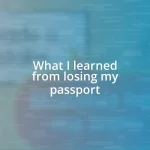Key takeaways:
- Public transport abroad enhances cultural immersion, offering opportunities to interact with locals and experience daily life, often more authentically than taxis or rentals.
- Common challenges include language barriers, crowded systems, and inconsistent schedules, which can complicate travel experiences.
- Being safety-conscious and researching local norms can help travelers navigate public transport more effectively and enjoyably while minimizing risks.
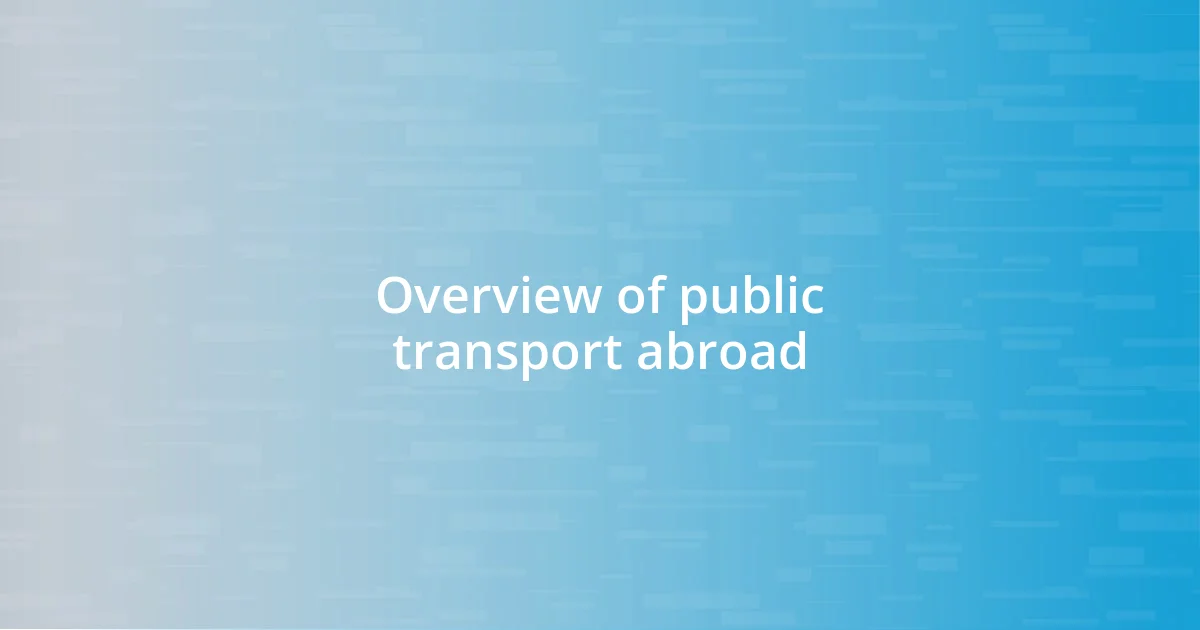
Overview of public transport abroad
Traveling abroad opens up a world of opportunity, especially when it comes to public transport. I’ve navigated bustling metros in Tokyo and charming trams in Lisbon, and each experience has left a mark on how I view cities. Isn’t it fascinating how each mode of transport can tell its own story about the culture and vibe of a place?
In many countries, public transportation is not just a means of getting around; it’s a moment to feel the pulse of daily life. I vividly recall riding a packed bus in Barcelona, the lively chatter around me painting a vibrant picture of local interactions. Have you ever found yourself lost in the beauty of people’s everyday routines while commuting? I think these fleeting moments give us a deeper connection to the places we visit.
Moreover, the accessibility of public transport abroad often surprises travelers. I remember being pleasantly amazed by the punctuality and efficiency of the London Underground. It’s incredible how a well-organized system can ease travel anxiety. What’s your take on using trains and buses when you’re abroad? I find that it not only saves money but also leads to unexpected adventures along the way.
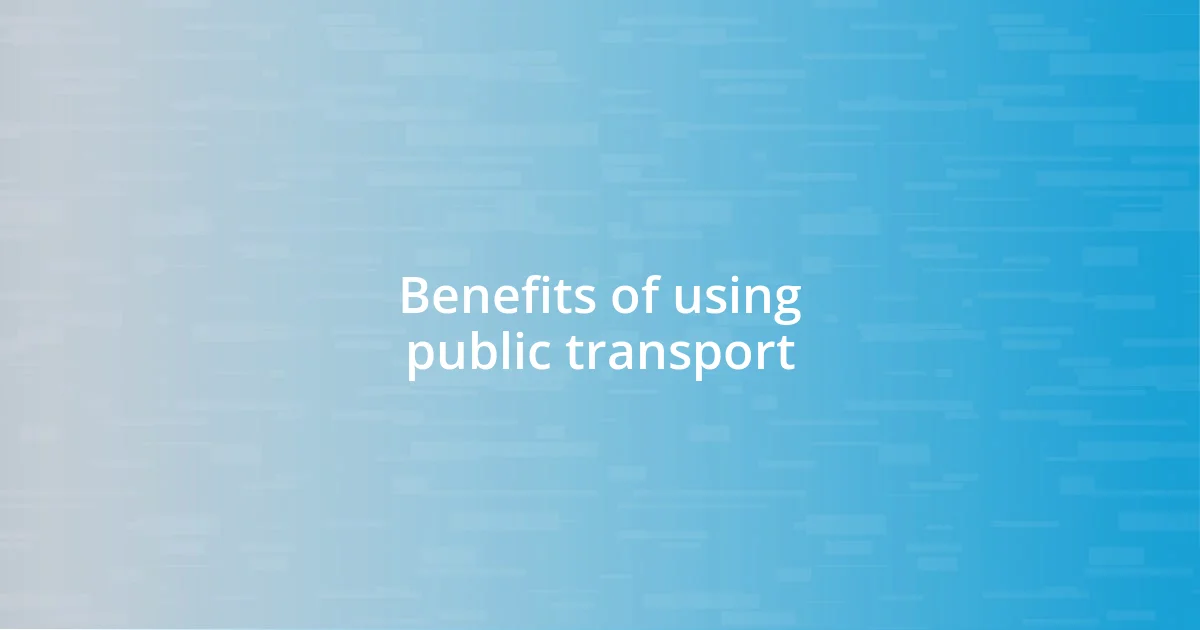
Benefits of using public transport
Public transport abroad offers a unique chance to immerse yourself in the local culture. I remember taking a bus in Sao Paulo, where the driver and passengers engaged in jovial banter. It was a spontaneous connection that made my travel feel genuine, something you might not experience in a taxi or while renting a car.
One major benefit is the cost-effectiveness of public transport. During my time in Berlin, I found that a single ticket for the U-Bahn saved me considerable expenses compared to trying to find parking or hailing rideshare services. The freedom to explore without financial worry is liberating, don’t you think?
Additionally, using public transport tends to be more environmentally friendly than individual car travel. For instance, while riding a packed train in Paris, I couldn’t help but feel proud of contributing to reduced carbon emissions. It felt good knowing that my commute was part of a larger effort towards sustainability, making my travel experience not just enjoyable but also responsible.
| Benefit | Description |
|---|---|
| Cultural immersion | Engaging with locals and experiencing everyday life. |
| Cost-effective | Significantly lower costs compared to taxis and car rentals. |
| Environmentally friendly | Reduces carbon footprint and supports sustainable travel. |

Common challenges with public transport
Navigating public transport abroad can come with its set of challenges, and I’ve encountered a few that shaped my travel experiences. For instance, I once found myself completely overwhelmed in a busy Tokyo train station, trying to decipher the complex signage and connect to the right line. In moments like these, it’s easy to feel lost in translation—literally. The sheer volume of options can sometimes hinder your journey, turning what should be a straightforward trip into a stressful adventure.
Some common hiccups travelers face include:
- Language barriers: Understanding schedules and directions can be difficult without proficiency in the local language.
- Crowds and congestion: Popular routes can be overwhelming during peak hours, making the journey uncomfortable.
- Inconsistent schedules: Not all cities boast the same reliability in their public transport systems, which can lead to unexpected delays.
I remember darting through the throngs of people in Paris’s Metro, clutching my map while trying to keep pace without losing my bearings. The buzz of the crowd was both exhilarating and nerve-wracking. While I appreciated the energy, the challenge of navigating the system kept me on my toes, reminding me that connection can sometimes feel like chaos.
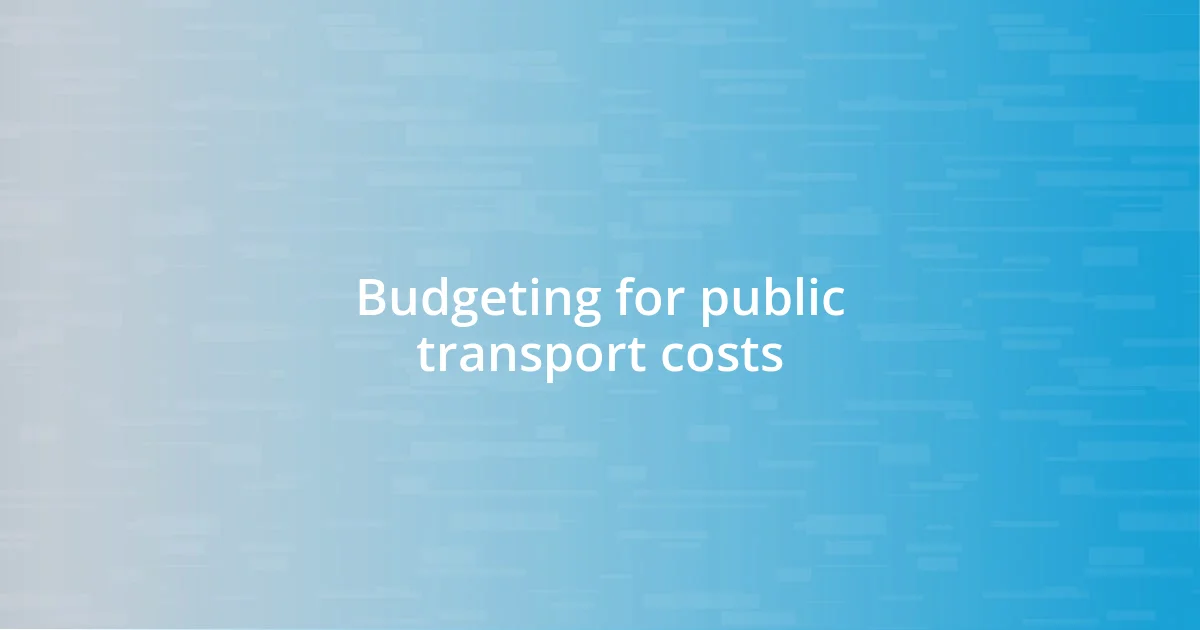
Budgeting for public transport costs
When budgeting for public transport costs, it’s crucial to do a bit of research ahead of your trip. For example, while traveling in Barcelona, I discovered that buying a T-10 card, which offered ten rides for a discounted rate, was not only economical but also incredibly easy to use. Have you ever thought about how a little preparation can lead to significant savings?
I’ve often found that local transport apps can provide a wealth of information about fares and routes. When I was in Amsterdam, I downloaded the GVB app, which not only helped me track my journeys but also informed me of daily or weekly passes that could save me money. The app made my life so much easier—why not embrace technology to enhance your travels?
Lastly, keep an eye out for hidden costs that can crop up unexpectedly, like fees for luggage on certain trains. Last summer in Rome, I was caught off guard when I had to pay extra for my suitcase on the regional train! It was a small but unexpected expense that reminded me to factor in all potential costs when planning my public transport budget.
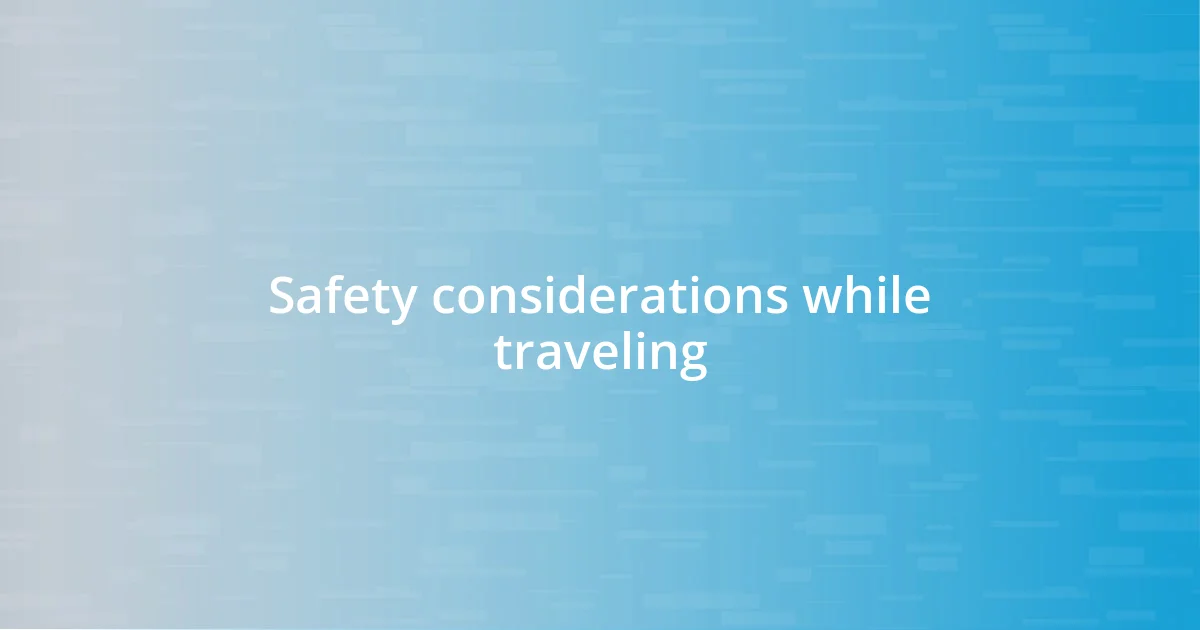
Safety considerations while traveling
When it comes to safety on public transport abroad, I can’t stress enough the importance of remaining aware of your surroundings. During my journey through London, I often observed travelers with their heads buried in their phones, oblivious to the hustle around them. It can be tempting to zone out, especially when you’re tired; however, keeping your wits about you can mean the difference between a safe trip and an unfortunate encounter.
I’ve learned firsthand that it’s wise to keep your belongings secure. On a crowded tram in Budapest, I felt a twinge of anxiety when a stranger brushed too closely. I tightened my grip on my bag, and thankfully, nothing was stolen. Have you ever had that gut feeling when someone seems just a bit too close for comfort? Listening to your instincts can save you from potential mishaps, and I never let my guard down in busy settings.
Another aspect to consider is the local crime rate. Before heading to Rio de Janeiro, I researched the areas I planned to visit, and I quickly learned which neighborhoods to avoid. This made my experience far less stressful as I could focus on enjoying the vibrant culture without unnecessary worry. Knowing where to go—and where to steer clear—allowed me to explore with confidence, which I think is key to fully absorbing the essence of a new place.
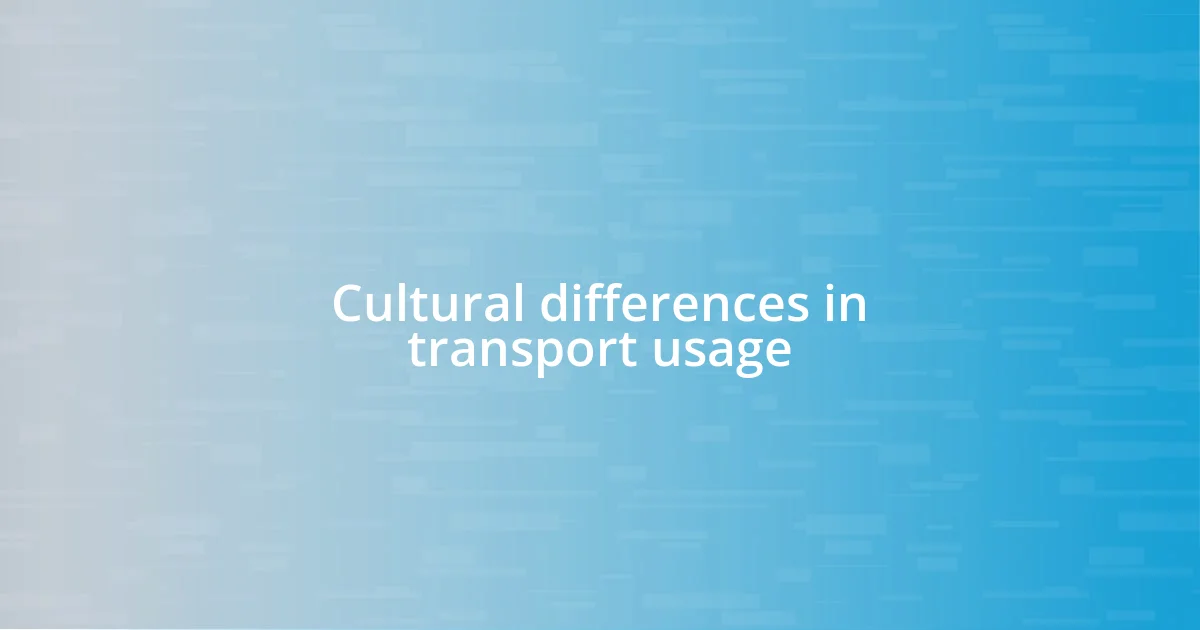
Cultural differences in transport usage
Cultural norms around public transport can vary widely from one country to another. I remember stepping onto the subway in Tokyo, where the concept of silence is deeply ingrained. People ride in serene stillness, absorbed in their smartphones or books, creating an almost meditative atmosphere. It struck me how different this was from the bustling, chatter-filled trains in New York City, where conversations flow freely and the energy is palpable.
Then there’s the matter of punctuality. During my trip to Germany, I was genuinely impressed by how on-time the trains were. It felt like a well-choreographed ballet; everything moved according to a precise schedule. Compare that to my experience in Mexico City, where delays often felt like the norm. Have you ever found yourself impatiently waiting for transport that seemed to be on its own leisurely timeline? It definitely reshaped my approach to leisure when traveling!
I’ve also encountered various levels of politeness across cultures when using public transportation. In Paris, I found that most people would politely step aside to let others off the metro before boarding. It’s a small yet significant gesture that promotes a smooth flow. In contrast, I’ve been in cities where the rush to board feels almost competitive, leading to shoving and chaos. Observing these behaviors not only highlights cultural differences but also enriches my understanding of social dynamics on the go.




